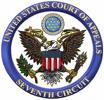 The court staked out no new legal ground in its opinions last week, so I’ll just briefly describe a case that nicely illustrates a classic problem in evidence law. Based on information provided by a confidential informant, Milwaukee police stopped a Ford Excursion on suspicion of drug activity. Inside were Marc Cannon (the driver), David Harris (Cannon’s cousin), $8,900 in cash (found in Harris’s pockets), and a brick of cocaine. The cash pointed to Harris’s likely involvement in the drug-dealing operation, but, without more, the evidence still seems short of beyond a reasonable doubt.
The court staked out no new legal ground in its opinions last week, so I’ll just briefly describe a case that nicely illustrates a classic problem in evidence law. Based on information provided by a confidential informant, Milwaukee police stopped a Ford Excursion on suspicion of drug activity. Inside were Marc Cannon (the driver), David Harris (Cannon’s cousin), $8,900 in cash (found in Harris’s pockets), and a brick of cocaine. The cash pointed to Harris’s likely involvement in the drug-dealing operation, but, without more, the evidence still seems short of beyond a reasonable doubt.
At trial, the government thus relied heavily on the testimony of the confidential informant, Anderson, who recounted a series of interactions with Cannon and Harris. Perhaps most damaging to Harris was testimony that Cannon told Anderson that his cousin was coming to Milwaukee with a signficant amount of cocaine. This testimony, of course, was hearsay: Cannon himself did not testify, and Harris had no ability to cross-examine him. In order to overcome the hearsay problem, the government relied on the exception for statements by co-conspirators. But this required the government to prove that Cannon and Harris were indeed co-conspirators, and the strongest evidence of that were the very statements whose admissibility was at issue. The government’s argument thus had something of a boot-strapping character.
Making the argument even more awkward on appeal, the jury convicted Harris of possession with intent to distribute, but actually acquitted him on a conspiracy charge.
The Seventh Circuit nonetheless rejected Harris’s hearsay argument and affirmed his conviction in United States v. Harris (No. 08-4026) (Flaum, J.).
In order for co-conspirator statements to be admissible, the government must prove the existence of the conpiracy by a preponderance of the evidence, not the higher beyond-a-reasonable-doubt standard that governs the guilt determination at trial. Even so, the Seventh Circuit conceded that it was a “close question” whether the government satisfied its burden of proof:
[T]he government’s evidence of the conspiracy centers around the disputed hearsay statements themselves (and while Bourjaily permits this kind of bootstrapping, it is not the strongest evidence of a conspiracy) and Harris’s presence in the Excursion when the police officers discovered a kilogram of cocaine. (p. 9)
The court ultimately found the evidence sufficient, relying on the facts that Harris drove the Excursion from Arkansas to Milwaukee, Harris was carrying “an exceedingly large quantity of cash,” and Anderson’s statements were corroborated in a number of other respects.
As an aside, it is interesting to see the court use the possession of a large amount of cash as a basis for inferring drug activity. This may be perfectly appropriate in the circumstances, but I wonder to what extent drawing this sort of inference unfairly disadvantages people who live in communities that are underserved by banks or who otherwise lack access to the sorts of financial services that many of us take for granted. As I discussed in an earlier post, this is not the first time this fall that the Seventh Circuit has been confronted with the question of when criminal activity can be inferred from carrying cash. Notably absent from these cases is any empirical research on how commonly and in what sorts of circumstances large sums of cash are carried for lawful purposes.

The final paragraph of the post is troubling. It notes the willingness of the criminal justice system to interpret a large amount of cash as an inference for drug sales and purchases. These sales and purchases are likely to take place in our most impoverished neighborhoods. Cash, in other words, is especially telling in the context of poverty.